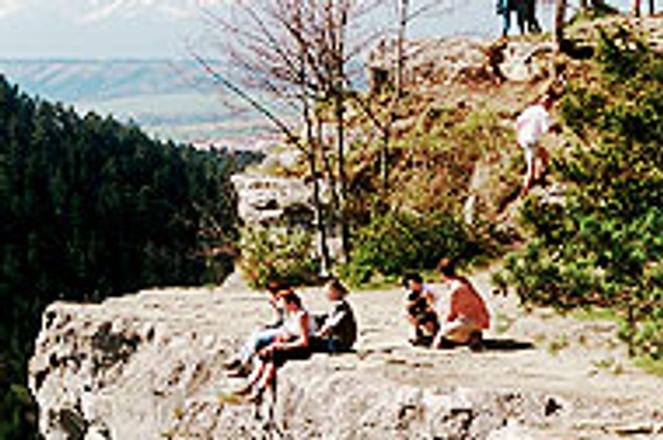HOW can the outdoors be best, and most profitably, preserved?photo: Chris Togneri
VISITORS to Slovakia's national parks and protected areas should treat nature more carefully. Otherwise, they might face a ranger trained to use strict or even painful punishments against undisciplined tourists.
"The trespasses are almost the same every year. Most often people walk off marked trails, practice sport activities off of marked spaces and out of season, take their cars where they aren't allowed, or enter the park with dogs," Juraj Švajda, manager of the guard department of the High Tatras national park administration, told The Slovak Spectator.
Visitors often collect plants, minerals, animals, and fruits - which is forbidden in national parks, caves, and all protected areas. They do not sometimes realise that forest fruits are a natural and irreplaceable food for many animals. Additionally, some people collect fruit very carelessly and they harm or even damage protected plants. Penalties, of course, depend on the extent of the trespasses.
"Recently there was a case of someone digging up the roots of a protected gentian. We brought the trespasser to the police. Finally, the deed was classified as a crime," said Švajda.
The rangers who care for parks and protected areas now have more rights in handling those who break the rules, cull plants, collect fruits and precious minerals, and kill animals. In addition to fines of up Sk5,000 (€125), according to the law on natural protection, rangers can use such coercive means as grips, hits, holds, and kicks of self-defence. Pepper spray and clubs are also allowed.
Members of the park guard can even handcuff lawbreakers, use guard dogs in some serious cases, or bring you to the police. They also can ask visitors to identify themselves or search their bags if they are suspected of carrying protected species. "Our people are trained to use these means," added Švajda.
Last year, the High Tatras national park collected fines of about Sk70,000 (€1,754). However, it is difficult to put a price on the damage caused by visitors each year.
"How can you quantify, for example, the damage caused when someone walks off of the marked trails and steps on a protected plant or harms a protected animal?" asked Švajda.
However, he emphasised that park rangers are supposed to act mainly as visitor's friends and advisors. Coercive means should only be used as a last resort when the visitor himself is aggressive and uncooperative.
"The ranger's role is more to explain to people what there is here to visit and see. They also act as a bridge between domestic people and tourists. In no way should he be seen as a policeman," added Švajda.
"In practice," he continued, "there is only a small percentage of cases when we use forceful methods, maybe 10 percent. Contact with tourists is mainly based on communication - the rangers are also trained in this. The majority of cases are solved this way. If we use punishments, we mostly use fines. For the year and a half since the new law has been in effect I do not remember us once using any of those mentioned coercive means."
The north side of the High Tatras, which belong to Poland, have a different system of park guards that Švajda hopes the Slovak national park will adopt.
In Poland, only about five people are highly armed. If a serious crime against natural protection appears, like poaching, they are notified. Otherwise, common forest rangers are those in first contact with visitors.


